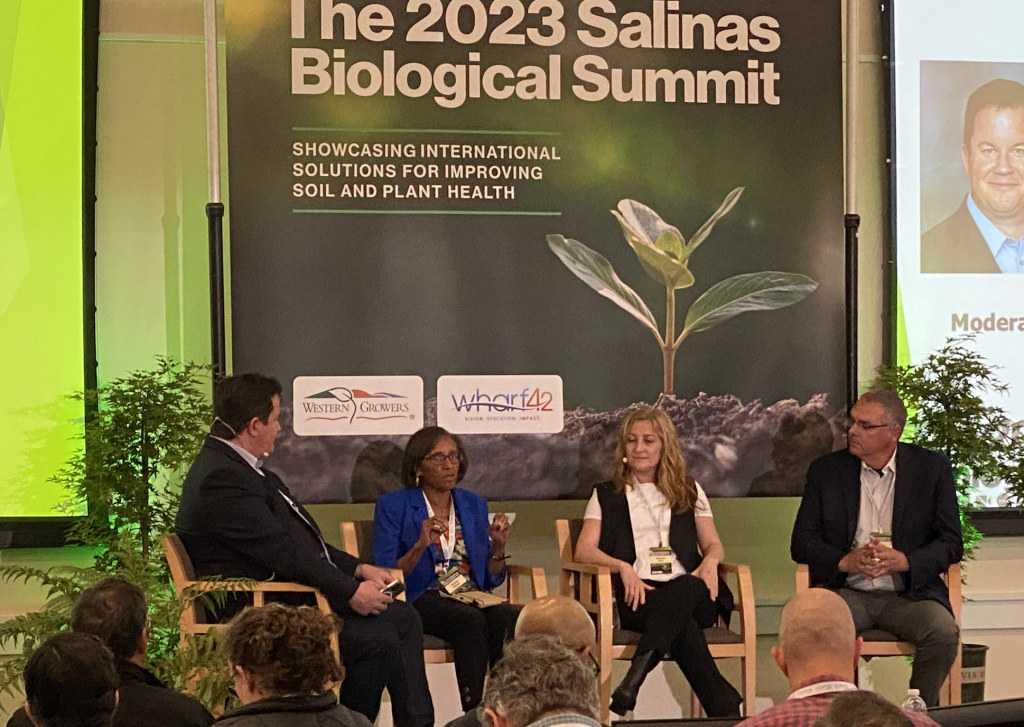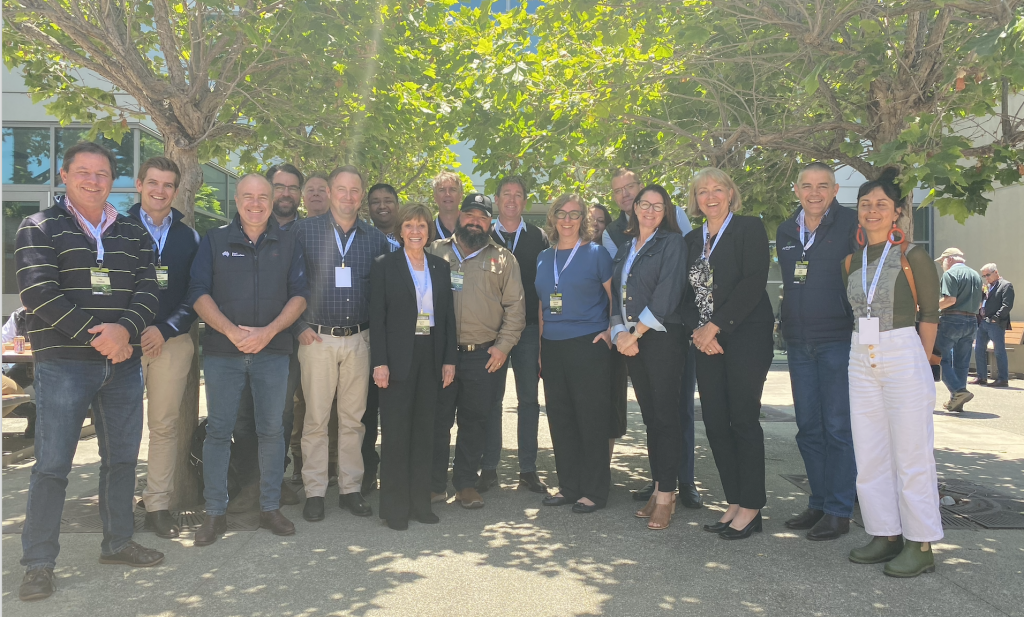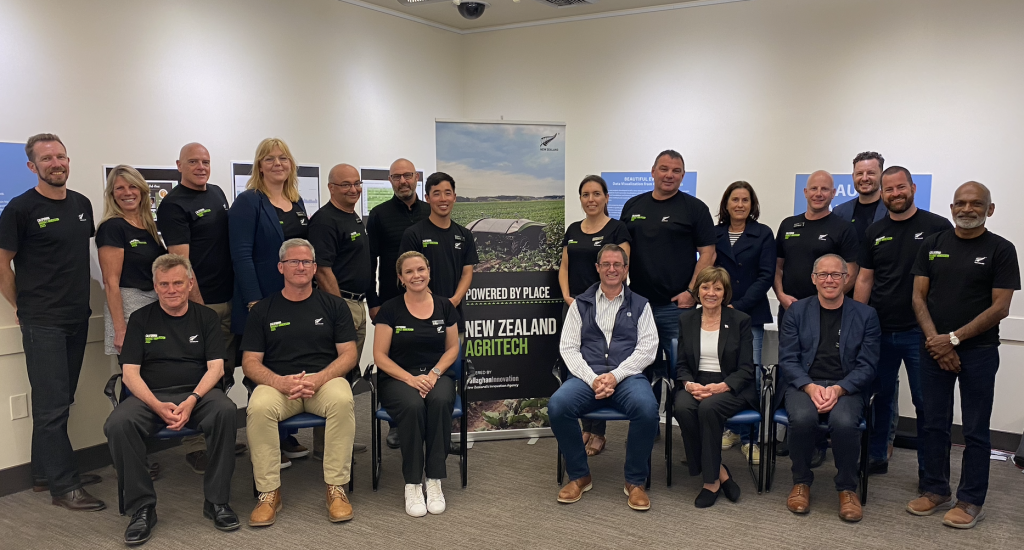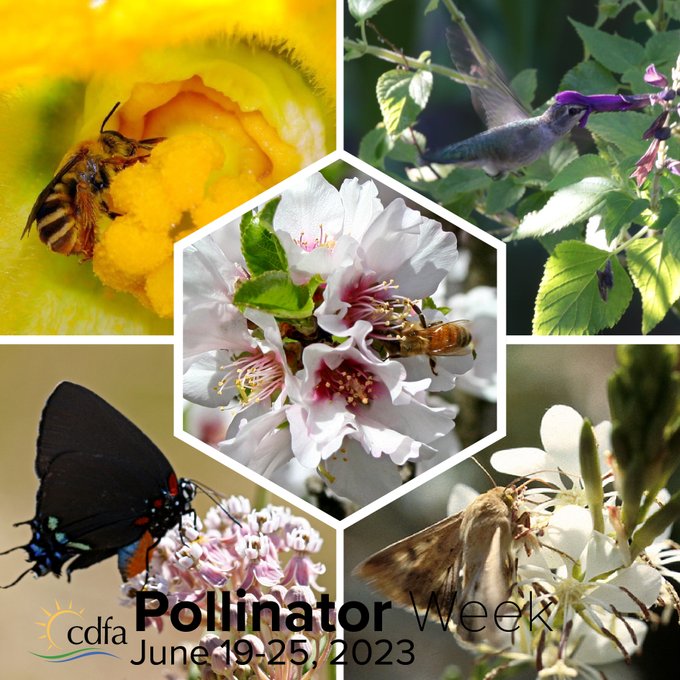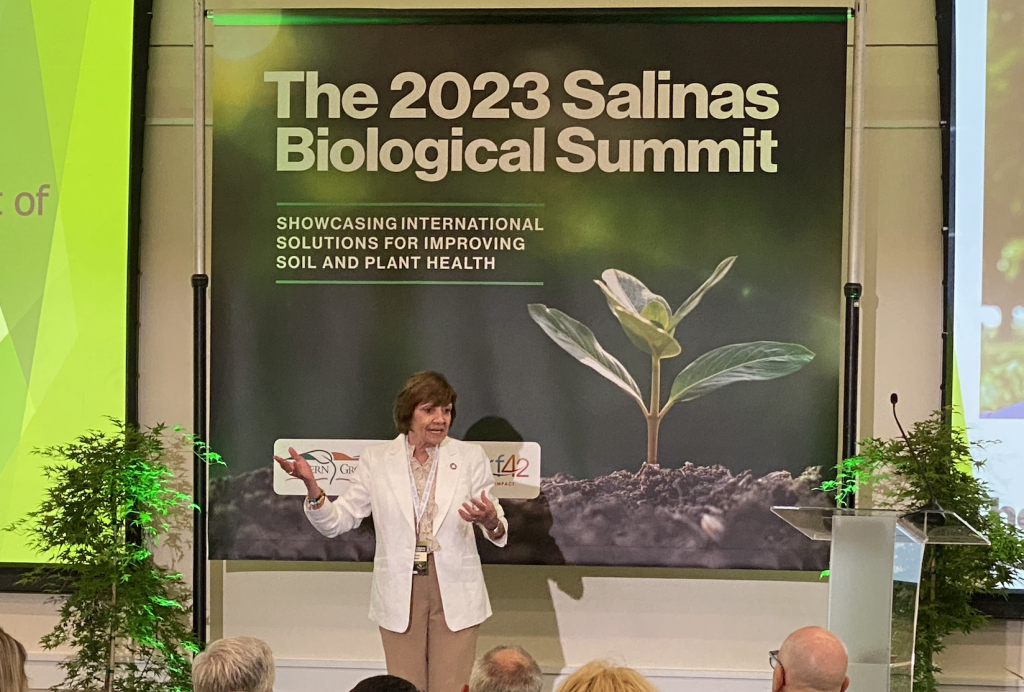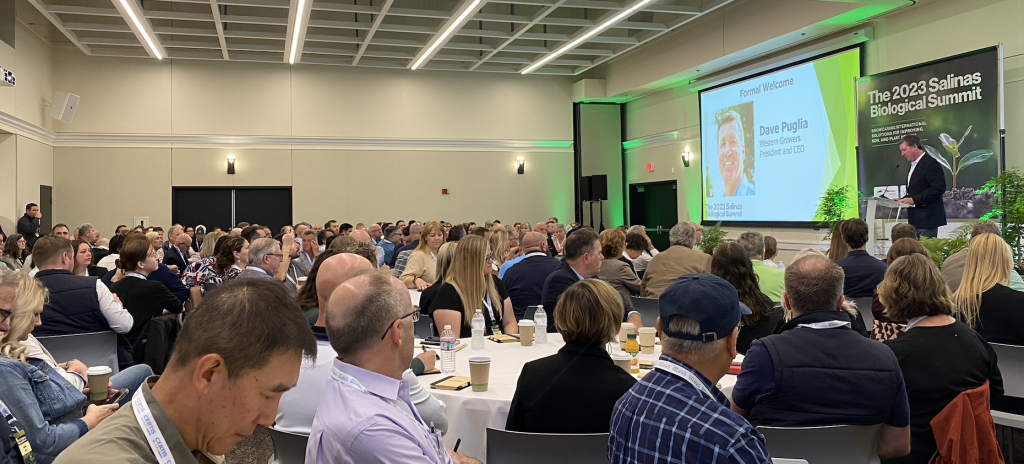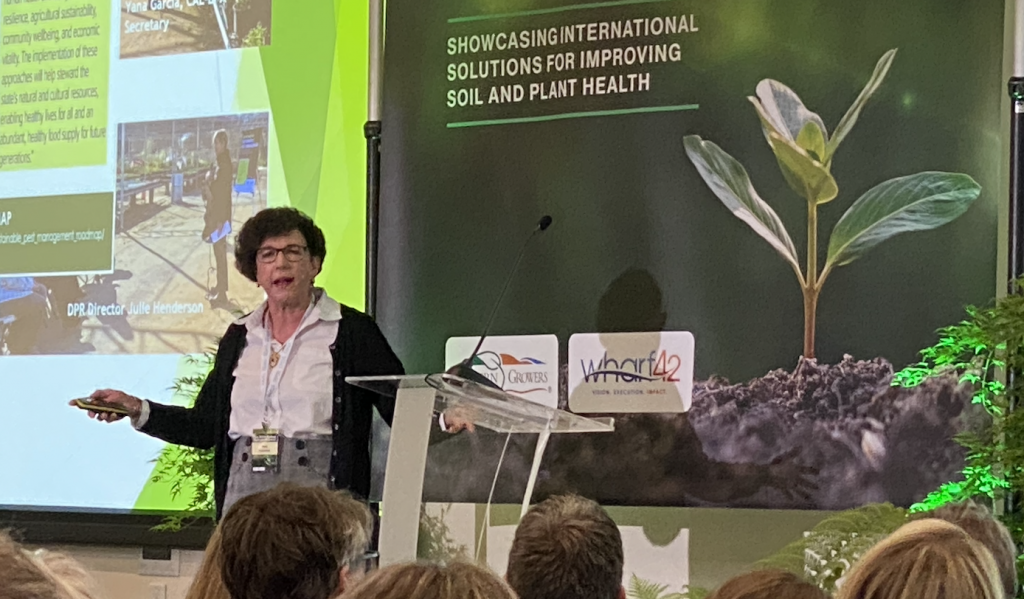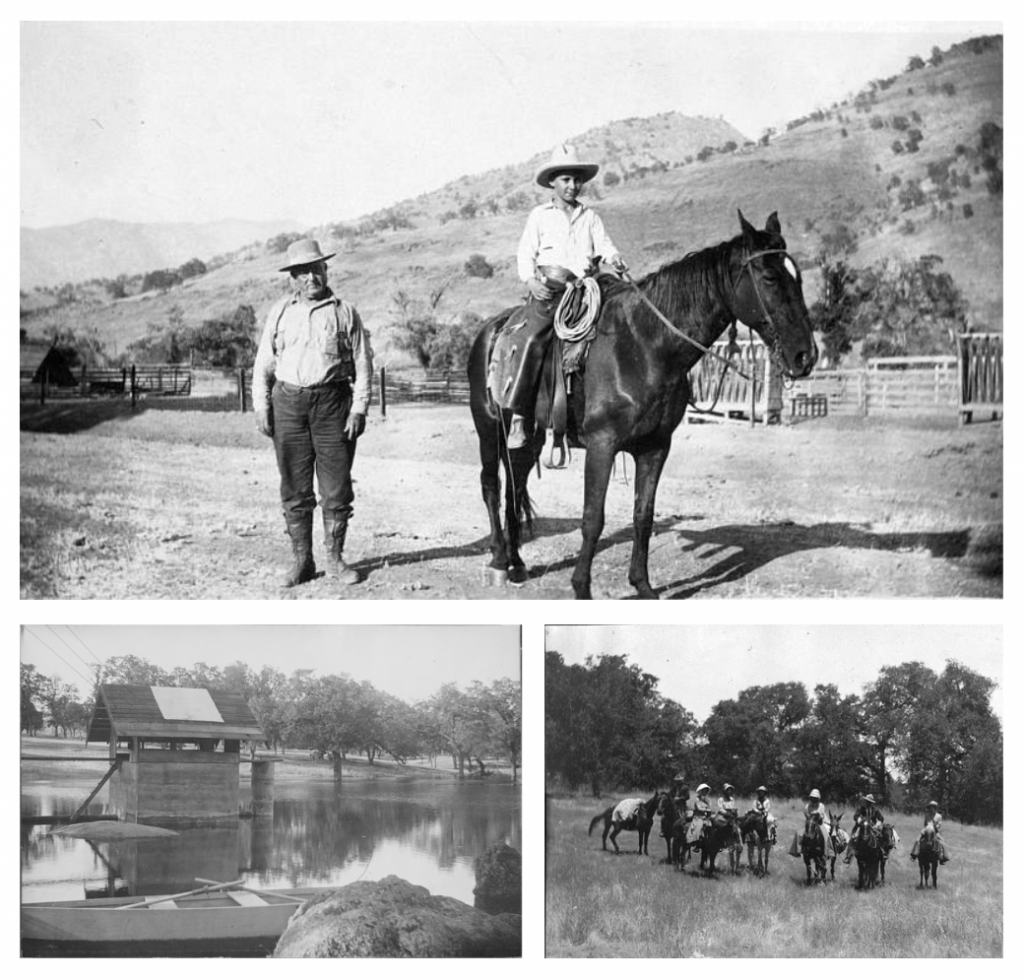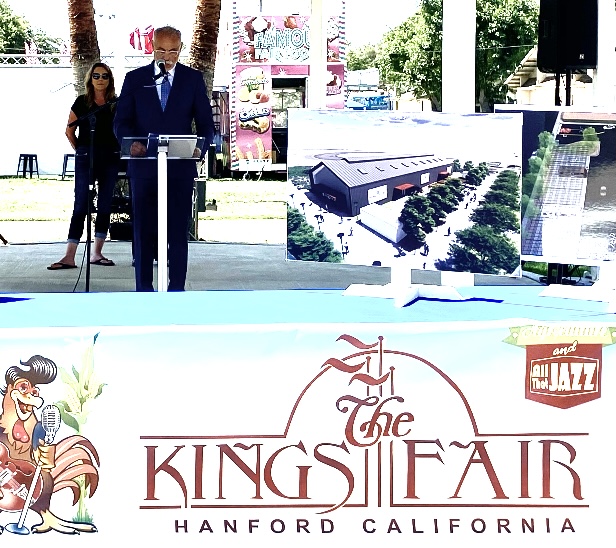A great group of speakers highlighted Day 2 of the 2023 Salinas Biological Summit, as growers and agricultural stakeholders gathered to hear about the exciting potential biologicals can have within sustainable pest management.
On the “Meet the Innovators” panel, speakers addressed the need for start-ups to internationalize and create product pipelines, and the need for consolidation within the sector. As the Mixing Bowl released their 2023 Ag Biologicals Landscape at the Summit yesterday, more than 1,200 companies are currently operating in this environment.
The “View from the Research Community” brought together representatives from University of California, FONTAGRO and DPH Biologicals. The panel discussion focused on the need for integration, system approaches, and more data from growers to help inform the biological research needs.
The Summit also included opportunities to connect with international partners from Australia, Israel, New Zealand and South Africa.
The 2023 Salinas Biological Summit brought together a great representation from across California’s agricultural industry. Looking forward to what next year brings!
